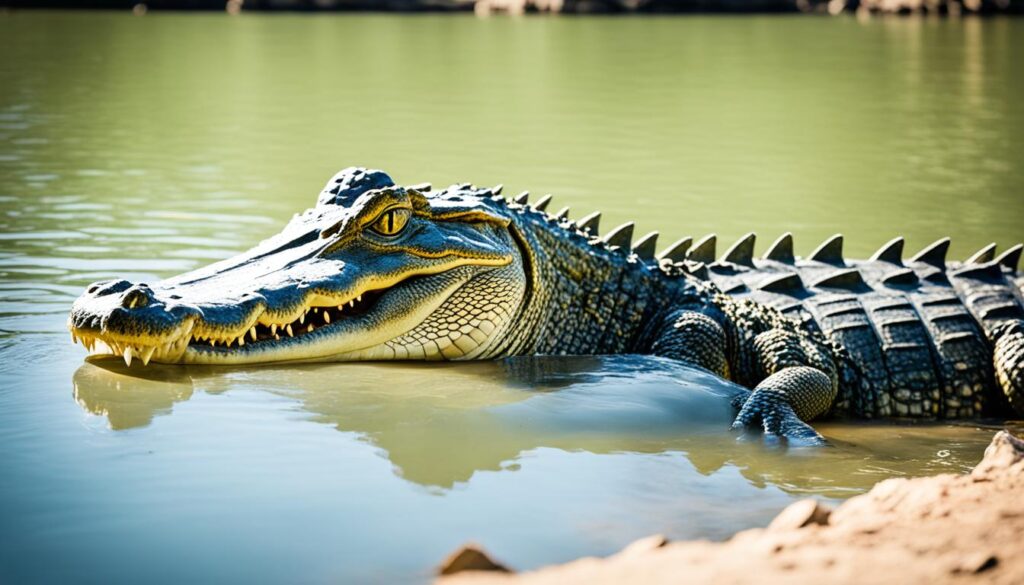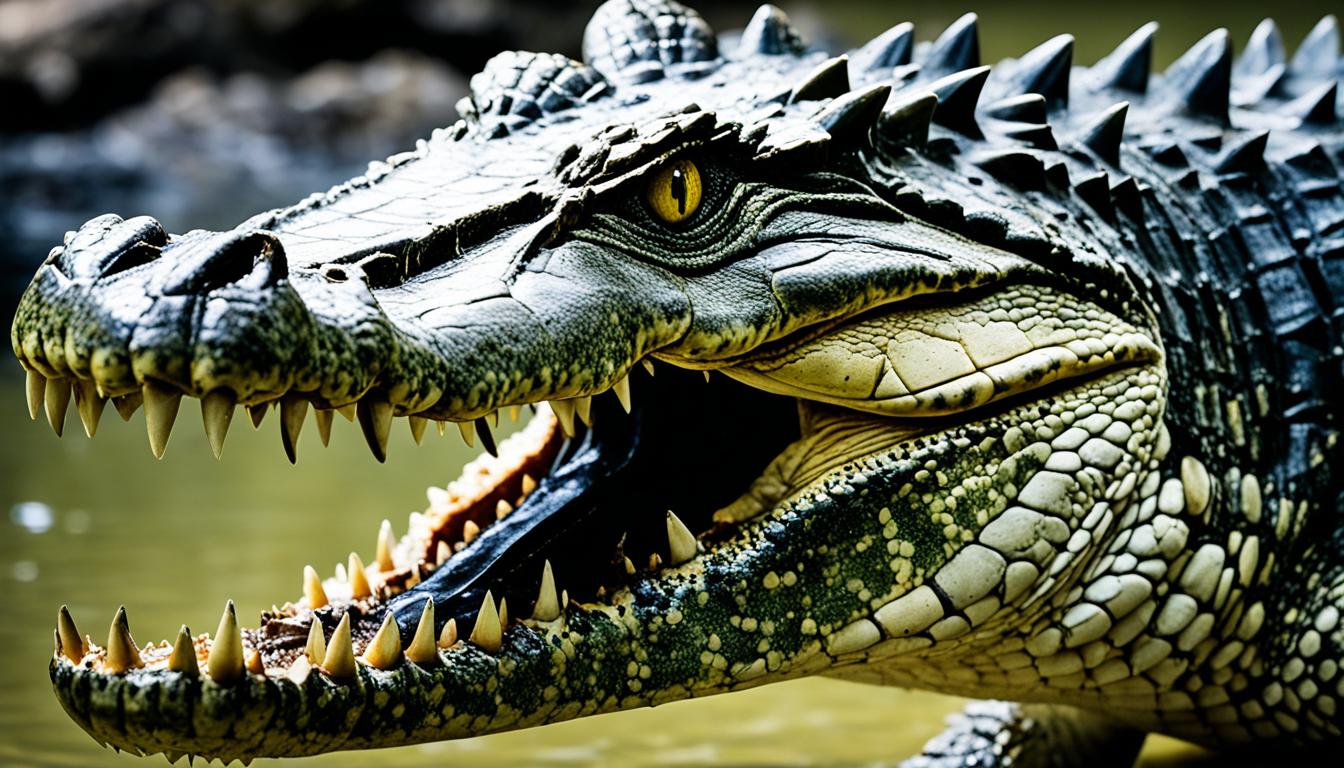It’s important to know how to stay safe around crocodiles. These big reptiles live in many places and can surprise you. They might seem rare, but they can be a threat, especially where they live well.
Knowing the risks helps keep you safe and avoids problems with crocodiles. It’s key to be aware of where they live to stay out of harm’s way.
Understanding Crocodile Behavior Towards Humans
Crocodiles are fascinating creatures with smart hunting ways. Knowing how they act towards humans helps keep us safe. They are stealthy and quick when hunting, making them great at catching prey. They usually go for prey that is smaller than them, using their speed and agility in the water.
Crocodilian Predation Strategies
Crocodiles have evolved to be great hunters. They have sharp teeth and strong jaws to catch and hold onto their prey. Here’s how they hunt:
- Camouflage: They blend in with their surroundings, waiting for the perfect time to attack.
- Fast Approach: They can move quickly from hiding, showing off their speed.
- Death Roll: After catching prey, they roll around to overpower and tear it apart.
Learning about crocodile aggression helps us avoid unexpected meetings with these creatures.
Common Reasons for Crocodile Attacks
There are many reasons why crocodiles might attack humans. Knowing these can help us stay safe around them. Common reasons include:
- Provocation: They might attack if they feel threatened or trapped.
- Territorial Defense: Males can be very protective of their territory, especially when mating.
- Misidentification: Sometimes, humans or pets might look like prey, causing crocodiles to react instinctively.
Risks of Encountering Crocodiles in Habitat
Knowing where crocodiles live is key for those who explore their territory. These reptiles live in many places, from fresh lakes to coastal areas worldwide. For example, saltwater crocodiles are found in northern Australia, Southeast Asia, and parts of Africa. Freshwater crocodiles prefer rivers and swamps.
Geographical Distribution of Crocodiles
It’s important to know where different crocodile species live to stay safe. Below is a table showing where some species can be found:
| Species | Geographical Locations | Habitat Type |
|---|---|---|
| Saltwater Crocodile | Northern Australia, Southeast Asia, parts of Africa | Coastal and estuarine environments |
| American Crocodile | Florida, Caribbean, Central America | Brackish and freshwater regions |
| Nile Crocodile | Sub-Saharan Africa | Lakes, rivers, and marshlands |
| Orinoco Crocodile | Venezuela and Colombia | Freshwater rivers and swamps |
Times You Are Most Likely to Encounter Crocodiles
Knowing when crocodiles are most active can help avoid them. They hunt at dawn and dusk. Also, they move more in warmer months. So, it’s best to stay away during these times in their habitats.
Are Crocodiles Dangerous to Humans?
Let’s look at the risk crocodiles pose to humans. Many worry about these ancient reptiles, but the facts show attacks are rare. They are not as common as you might think when compared to other animals.
Statistics on Crocodile Attacks Worldwide
Worldwide, crocodile attacks are not as common as you might think. In places where they live, fatal attacks are usually low. For example, in the United States, fewer than ten people die each year from alligator attacks. This shows that these incidents are often more shocking than common.
Comparative Risk: Crocodiles vs. Other Animals
It’s useful to compare crocodiles to other animals to see if they are dangerous to humans. Here’s a closer look at the risk:
| Animal | Average Fatalities per Year | Common Regions |
|---|---|---|
| Crocodiles (Alligators) | 1-5 | US, Australia, Africa |
| Dogs | 30-50 | Worldwide |
| Snakes | 50,000+ | Worldwide |
| Insects (e.g., mosquitoes) | 2,000,000+ | Worldwide |
The data shows that while crocodiles can be dangerous, they are much less risky than dogs, snakes, and insects. Knowing your surroundings and understanding crocodiles can help reduce the danger.

Human-Crocodile Conflict: The Reality
Understanding how humans and crocodiles interact is key to staying safe where they live together. Humans often move into crocodile habitats, making them more likely to run into each other. This can lead to conflicts over food, as both humans and crocodiles need fish and livestock to survive.
Understanding Factors Leading to Conflicts
Several things lead to conflicts between humans and crocodiles. Humans not taking care of their waste and playing too close to crocodile homes can upset these animals. Not knowing about crocodiles can also put people in danger.
Teaching communities about crocodile behavior and setting up warning systems helps manage these conflicts. This makes it safer for everyone.
Recent Case Studies of Human-Crocodile Conflicts
Recent events show how important it is to be careful near crocodile areas. Attacks often happen when people ignore safety rules. This shows we need more education on staying safe.
Setting up safe zones and local rules can help prevent crocodile attacks. Learning why these conflicts happen helps us find better ways to stop them. This makes places safer for both humans and crocodiles.










